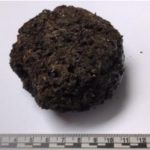Archaeology Day – 2018!
PAF Home
See Past Events
PAST PROGRAM…..PAST PROGRAM….PAST PROGRAM
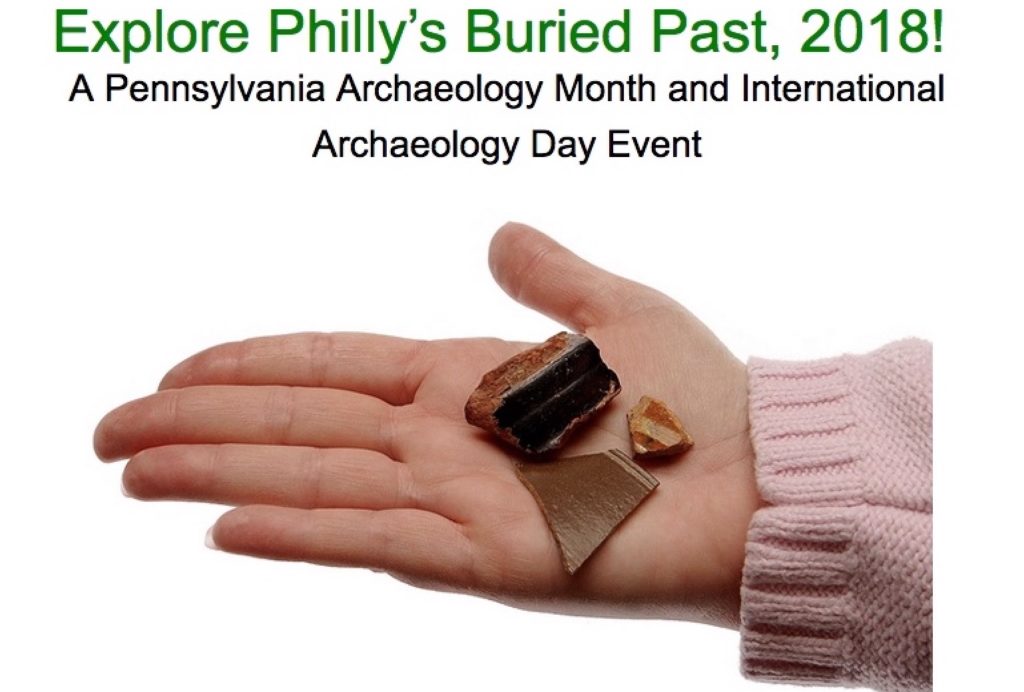
EXPLORE the History Beneath Your Feet!
SEE the Latest artifact discoveries from our Town!
MEET Local Archaeologists working in our area!
Saturday October 6th, 10am-3:30pm
National Constitution Center (Kirby Auditorium)
527 Arch Street, Philadelphia
FREE EVENT OPEN TO ALL! (Ages: 10-100)
A day of illustrated talks and museum gallery tours highlighting artifact
discoveries and on-going archaeological research from around Philadelphia!
Co-sponsored by the Philadelphia Archaeological Forum (PAF) and
Independence National Historical Park. Hosted by the National Constitution Center.
Stop by or stay all day! Parking/Public Transportation/Directions here…
PROGRAM Schedule: PAST PROGRAM!!!!
 10:00 am
10:00 am
Welcome & Introduction Presented by National Park Service Archeologist Jed Levin.
10:10am Raffle
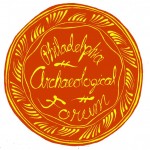 10:15am
10:15am
Philadelphia Archaeology: The Year in Review Presented by PAF President Douglas Mooney.
10:30am From Winter Wonderland to Urban Landscape: How a Late 18th Century Sketch of Pegg’s Run Helped Inform Recent Archaeological Investigations along the Delaware Waterfront. Archaeological research both draws upon and extends the written historical record. Samuel Pickard and Daniel Eichinger (AECOM-Cultural Resources) demonstrate this with the investigation of Pegg’s Run, a creek drainage present in the early days of Northern Liberties (now a neighborhood in the City of Philadelphia). The archaeological record is examined using an unpublished, hand-drawn sketch, entitled “Play Place of our Early Days”, drawn long ago by the noted historian and antiquarian John Fanning Watson.
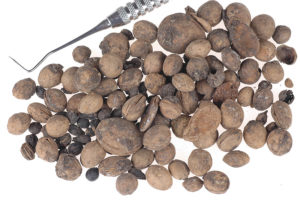
10:45am A Community of Comestibles: Examining People and their Plants in 19th Century Port Richmond Archaeologists discovered 150+ year old seeds while excavating in the Port Richmond neighborhood of Philadelphia. These seeds help us better understand how people used plants during the 19th century. Just as today, plants were eaten as food, taken as medicine, used for decoration, or simply reflect the natural environment of a location. Archaeologists Danial King and Alexandra Crowder (AECOM-Cultural Resources) talk about the discovery of seeds during the Pennsylvania Department of Transportation’s I-95 highway improvement project and share what the seeds tell us today about plants in mid-19th century Philadelphia.
11:00am Three-Minute Lightning Round #1
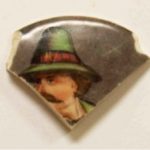
- Some thoughts on Jewelry in the Early Twentieth Century Excavations undertaken in Delaware County and in the Germantown section of Philadelphia have unearthed early 20th century domestic deposits. Among the artifacts were several pieces of jewelry. Archaeologist Ken Basalik (Cultural Heritage Resource Services, Inc.) will discuss the nature of these finds and the kind of information that might be gleaned from them.

- Celebrating Archaeology Month from Above the City A new Public Service Announcement promoting Archaeology Month debutes on the PECO building this October. Nicholas Moy, a student in Drexel University’s Westphal College of Media Arts and Design’s Digital Media Department made the PSA in consultation with the archeologist from Independence National Historical Park. The PSA uses photographic images of artifacts from the National Constitution Center archaeology site to construct an animated ‘runway’ of artifacts from Philadelphia’s historic past.

- Where History Meets Technology While history is deemed to be a record of the past and technology the engine of the future, it is still possible and sometimes absolutely necessary to marry the two. A new Public Service Announcement promoting Archaeology Day celebrations in Philadelphia does just that. To make the PSA, artifacts were taken out of archives, digitally animated, and given a new exciting life – symbolizing the work of archaeology, and inviting Philadelphians to look deeper into their past in order to understand more about their present. Mariia Osanova, a student in Drexel University’s Westphal College of Media Arts and Design’s Digital Media Department will talk about how this project.
- “New China Ware”: American True Porcelain from the National Constitution Center Site The recent discovery of new examples of American true porcelain recovered from the site of the National Constitution Center continue to confuse the history of eighteenth century porcelain manufacture in Philadelphia. Who was making it? Where was it being made? Were people actually buying it? The answers to all these questions will be answered – or not – by Debbie Miller (AECOM, Cultural Resources).
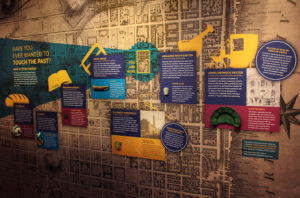
- Archeology in the Museum: Visitor Response to the NCC Archeology Exhibit Seventy objects from the vast National Constitution Center site archaeological collection housed in Independence National Historical Park have been part of the “We The People” exhibit at the National Constitution Center for more than a year. A handful of these items were 3-dimensionally-scanned and then printed and painted by Bernard Means, Director of the Virtual Curation Laboratory at Virginia Commonwealth University, and his students to make artifact replicas that are incorporated into the new display. Sarah Winski, Manager of Exhibit Development at the NCC, and Elena Popchock, the Exhibit Developer, will share the public’s response to the archaeology items and the archaeological replica’s that allow the public to ‘touch the past’. (Talk followed by a tour of the gallery – see below.)
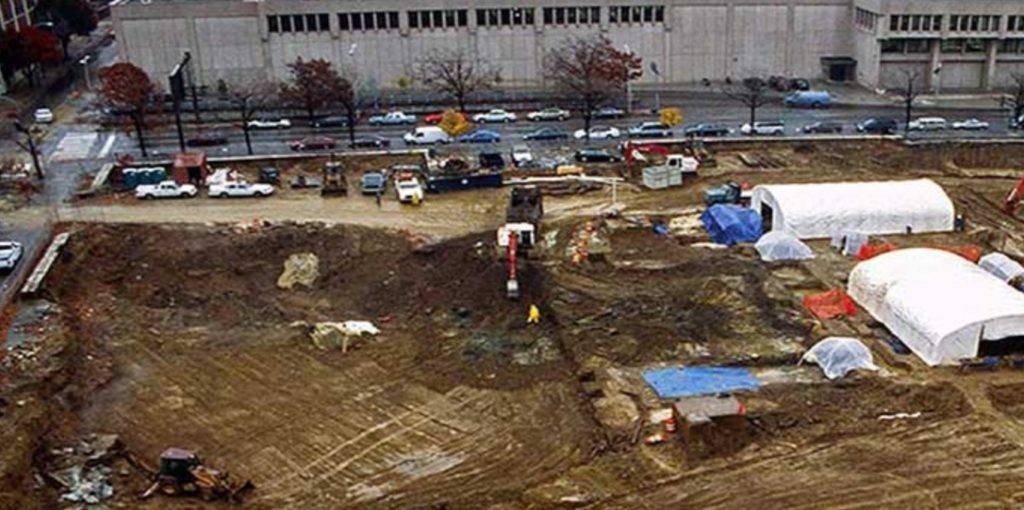
11:15am Archeology in and of the City: How and Why the Site of the National Constitution Center Was Excavated Jed Levin, National Park Service Archeologist and Chief of the History Branch at Independence National Historical Park outlines the unusual aspects of excavating a large, urban archaeology site.
11:30am “Of Acts and Statutes”: Archaeology and Public Sanitation in Colonial Philadelphia Historical records note that the depth of privy’s (aka ‘outhouses’) were regulated in Philadelphia as early as 1763. In this talk, Delaware State Parks and Recreation Archaeologist John McCarthy looks at how archaeological studies of privy’s from early Philadelphia reflect both the development of municipal government activities and early ideas about public health.
11:45am Raffle
Lunch Hour – Lunch Hour – Lunch Hour
Small Group Exhibit Tour: National Constitution Center – The Archeology in the We The People Exhibit Sarah Winski, Manager of Exhibit Development at the National Constitution Center, and Elena Popchock, the NCC Exhibit Developer, lead ‘insider’ tours over the lunch break. The tours are scheduled on the half hour starting at noon. Space is limited, so event guests are invited to signed up in advance during their check-in at the table in the lobby on the day of the event. Tours will leave from the check-in table promptly at their scheduled times.
 1:30pm Afternoon Welcome.
1:30pm Afternoon Welcome.
Presented by National Park Service Archeologist Jed Levin.
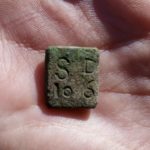
1:35pm “Fever!”: The Philadelphia Lazaretto Quarantine Station, A Precursor to Ellis Island The Philadelphia Lazaretto in Essington is the oldest surviving quarantine station in North America. Built in 1799, it one was of several public health initiatives the city government implemented in response to the Yellow Fever epidemic of 1793. Archaeologist Rich Veit talks about fieldwork done at the site by Monmouth University.
1:50pm Raffle
1:55pm Three-Minute Lightning Round #2
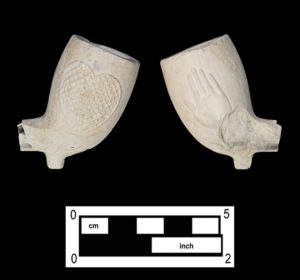
- The Red Hand of Ulster in a Philadelphia Privy In July 2018, archaeologists excavating along the Delaware waterfront recovered a late 19th century tobacco pipe. This pipe was embossed with a molded hand and heart motif identified as the Red Hand of Ulster. Archaeologist Scott Morris (AECOM, Cultural Resources) will talk about how the the pipe decoration symbol speaks to the social and political leanings of a portion of Philadelphia’s Irish and Irish-American populations.
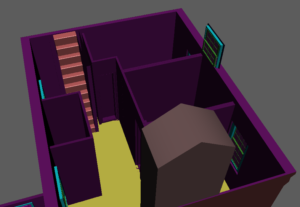
- Virtually Reconstructing the Dexter House James Oronoco Dexter was a manumitted African American living in late 18th-century Philadelphia who was active in the formation of the city’s Free African community. His house, once standing near what is today the National Constitution Center, is of historical significance. Drexel University Pennoni Honors College student Varsha Ajith shares the most recent developments in an ongoing project to build a virtual 3D model of the house which will be used to interpret the site’s archaeological evidence.
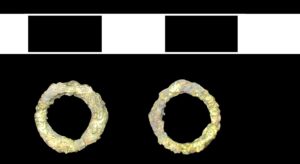
- Rings of Gold in Days of Old The recent re-discovery of the First Baptist Church’s cemetery (ca.1702-1859) resulted in the recovery of human skeletal remains and associated burial artifacts that highlight life and funerary practice in pre- and post colonial-era Philadelphia. A small number of “gold rings” were recovered from a grave which don’t seem to fit with the expected burial practices of the congregation. Archaeologist George Leader will discuss the rings and their possible meaning.
- Counting Artifacts in Paintings Paintings of daily life dating from early Philadelphia often depict pottery and glass vessels being used in specific places or being used by particular people. The paintings also depict the vessels in use for various different activities. Archaeologist Keith Swift talks about using the information contained in period paintings to help analyze excavated artifacts.
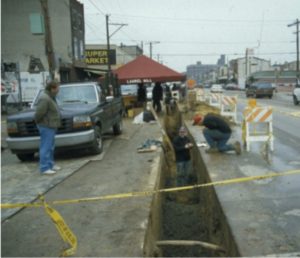
2:15pm City of (Inconvenient) Cemeteries: The Disturbance of Historical Burial Grounds in Philadelphia Philadelphia’s many unmarked cemeteries and burial grounds have been repeatedly disturbed by construction activities for more than 200 years. Incredibly, City officials and local government agencies still make no effort to proactively protect these resources, and profess a wide-eyed bewilderment each time another one is impacted. PAF President Doug Mooney provides an overview of Philadelphia’s unmarked burial grounds and their long history of being disturbed, examines how they become lost in the ever changing city scape, and addresses the reasons why they should be easy to anticipate and avoid.
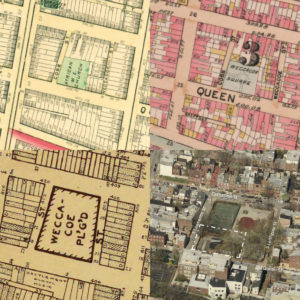
2:30pm Mapping Philadelphia’s City of the Dead The Philadelphia Archaeological Forum’s Historical Burial Places Interactive Map documents the final resting places of Philadelphia’s past citizens. Learn how this map was made and what these mostly forgotten places can tell us today.
2:45pm Bacteria and Brains from the First Baptist Church of Philadelphia Several hundred skeletons were recovered a few years ago from a forgotten graveyard on Arch Street in Old City Philadelphia. Researchers involved in the project will talk about how ‘genetic sequencing’ of the soil found in and around the buried remains is revealing bacteria that may provide clues to causes of death. They will also explain how mummified brain material is helping determine both the time of death as well as the health conditions of some of the individuals. (Kim Moran, Rutgers U; Anna Dhody, Mutter Research Institute; George Leader, The College of New Jersey/UPenn; J. Beatrice, The College of New Jersey; N Bonneau, Rutgers U/UPenn)
3:00pm-3:15pm Raffle; Question Period
PROGRAM ENDS
For details about this event and past program descriptions go here…
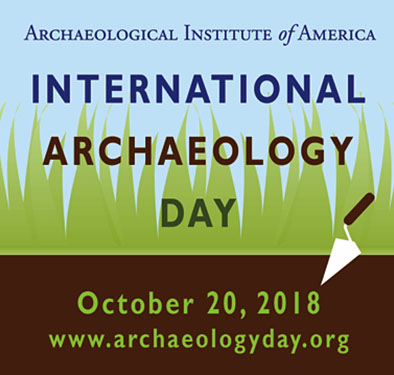
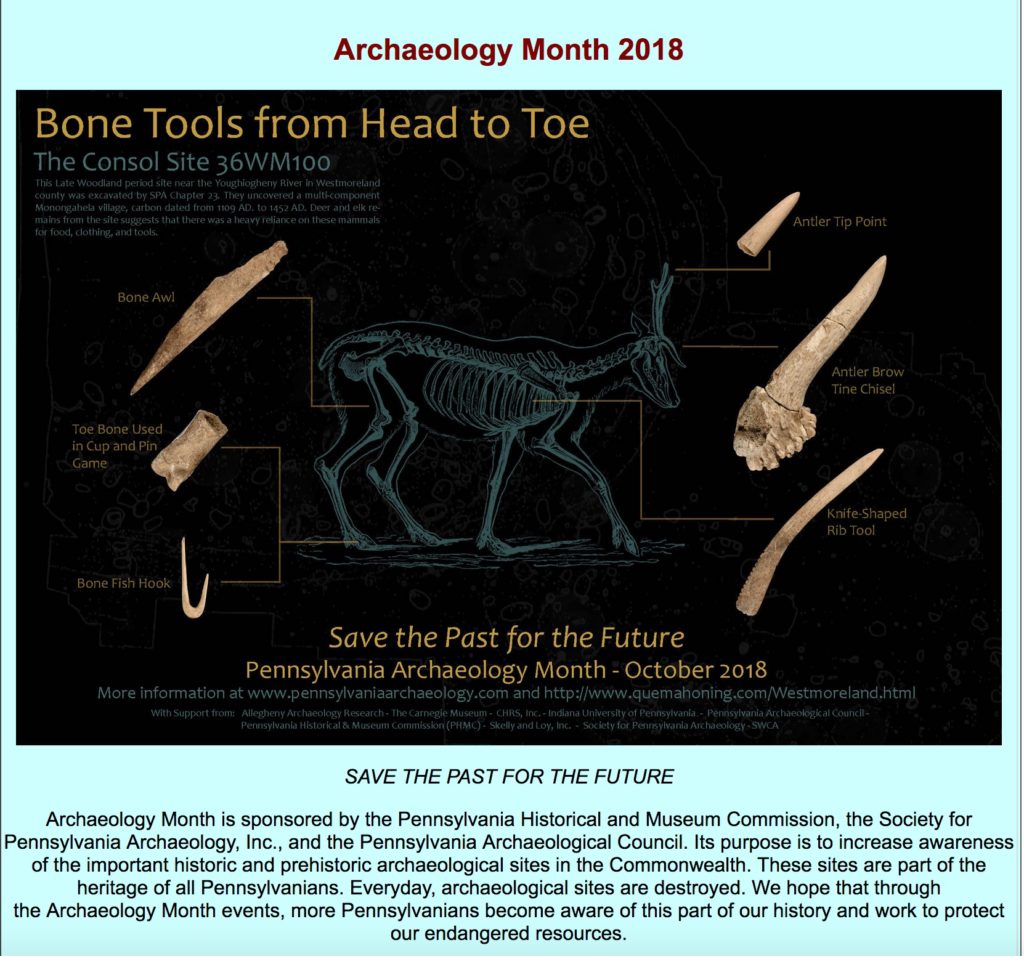
by admin
